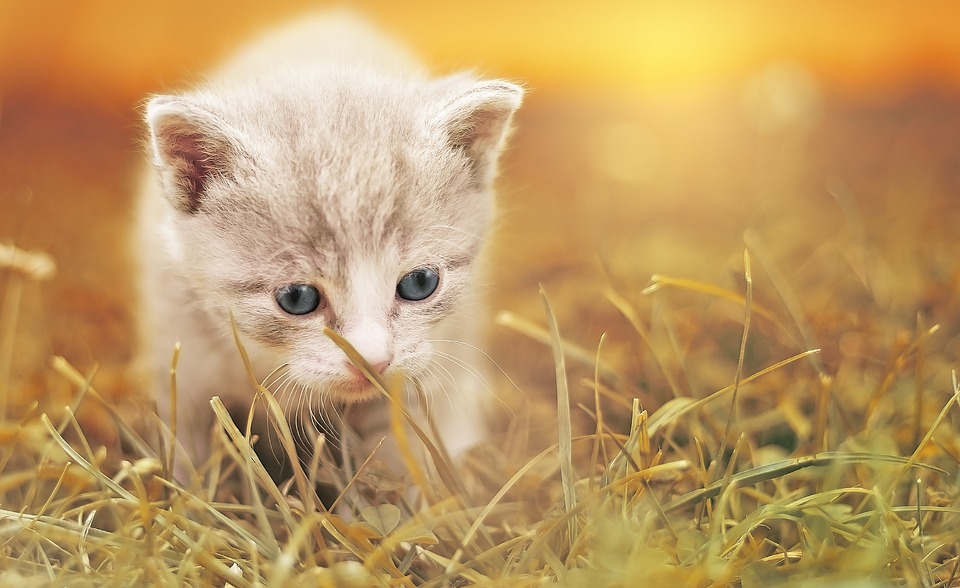Excessive grooming behavior in cats can be a cause for concern for many pet owners. While grooming is a natural behavior for cats, excessive or obsessive grooming can indicate underlying health issues or stress. In this article, we will explore the possible causes of excessive grooming in cats and provide effective solutions to address this behavior. Additionally, we have included a Frequently Asked Questions (FAQs) section to address common queries related to cat grooming behavior.
Understanding Excessive Grooming Behavior in Cats:
Normal grooming behavior in cats: Cats are known for their grooming habits, which are essential for maintaining a healthy coat and removing dirt and debris. Grooming also provides cats with a way to cool down and stimulate blood flow.
Identifying excessive grooming behavior: Excessive grooming is characterized by an increase in frequency or duration of grooming sessions. Cats may excessively lick, chew, or bite their fur, leading to hair loss, skin irritations, and wounds.
Potential causes of excessive grooming: Excessive grooming can be caused by various factors, including fleas, allergies, stress, pain, and behavioral issues. Identifying the underlying cause is crucial for effective treatment.
Effects of excessive grooming on a cat’s health: Excessive grooming can lead to skin infections, hot spots, hair loss, and wounds. In severe cases, cats may ingest excessive amounts of fur, resulting in hairballs or gastrointestinal issues.
Common Causes of Excessive Grooming in Cats:
Fleas, ticks, and other external parasites: Infestations of fleas, ticks, or mites can cause intense itching and discomfort, leading to excessive grooming.
Allergies and skin conditions: Cats may develop allergies to certain foods, environmental factors, or substances, leading to itchiness and excessive grooming. Skin conditions such as dermatitis or fungal infections can also trigger excessive grooming.
Stress, anxiety, or boredom: Cats may resort to excessive grooming as a self-soothing mechanism when they are stressed, anxious, or bored. Changes in the environment, routine, or introduction of new pets can contribute to stress.
Pain or discomfort: Cats experiencing pain or discomfort, such as arthritis or urinary tract infections, may groom excessively in an attempt to alleviate their discomfort.
Behavioral issues: Some cats may develop compulsive grooming behaviors, which can be triggered by stress, anxiety, or obsessive-compulsive disorders.
Addressing Excessive Grooming Behavior: Effective Solutions:
Veterinary examination: It is important to rule out any underlying medical conditions that may be causing excessive grooming. A veterinarian can perform a thorough examination and recommend appropriate diagnostic tests.
Parasite prevention and treatment: Regular use of flea and tick preventatives, as well as prompt treatment for any infestations, can help eliminate external parasites and reduce excessive grooming.
Allergy management and skin care: Identifying and managing allergies through dietary changes, environmental modifications, and allergy medications can alleviate itchiness and reduce excessive grooming. Regular grooming and skin care, including bathing and moisturizing, can also help.
Environmental enrichment and stress reduction techniques: Providing a stimulating and enriched environment for your cat can help alleviate stress and boredom, reducing the likelihood of excessive grooming. Interactive toys, scratching posts, and perches can provide mental and physical stimulation.
Behavior modification techniques: In cases of behavioral issues, working with a professional behaviorist can help identify triggers and develop a behavior modification plan to address excessive grooming.
Regular grooming routine and maintenance: Establishing a regular grooming routine, including brushing and grooming sessions, can help remove loose fur and reduce the urge for excessive grooming.
Nutritional considerations for healthy skin and coat: Providing a balanced and nutritious diet that supports a healthy skin and coat can contribute to overall well-being and reduce the likelihood of excessive grooming.
Frequently Asked Questions (FAQs):
1. What is considered excessive grooming in cats?
Excessive grooming in cats is characterized by an increase in frequency or duration of grooming sessions, leading to hair loss, skin irritations, and wounds.
2. How can I determine if my cat’s excessive grooming is due to a medical issue or behavioral problem?
Consulting with a veterinarian is essential to determine the underlying cause of excessive grooming. A thorough examination and diagnostic tests can help rule out medical conditions.
3. Are there any home remedies to address excessive grooming in cats?
While home remedies may provide temporary relief, it is important to consult with a veterinarian to address the underlying cause of excessive grooming effectively.
4. Can excessive grooming behavior in cats be a sign of stress or anxiety?
Yes, excessive grooming can be a sign of stress, anxiety, or boredom in cats. Identifying and addressing the underlying cause can help alleviate excessive grooming.
5. Are there any specific cat breeds more prone to excessive grooming behavior?
Some cat breeds, such as Siamese and Burmese cats, may be more prone to excessive grooming behavior. However, excessive grooming can occur in cats of any breed.
6. How long does it take to see improvement after addressing excessive grooming behavior in cats?
The time it takes to see improvement in excessive grooming behavior can vary depending on the underlying cause and the effectiveness of the treatment plan. It is important to be patient and consistent in implementing the recommended solutions.
7. Should I consult a professional behaviorist if my cat’s excessive grooming behavior persists?
If your cat’s excessive grooming behavior persists despite implementing appropriate solutions, consulting with a professional behaviorist can provide further guidance and support.
Conclusion:
Excessive grooming behavior in cats can have various underlying causes, ranging from medical issues to stress and behavioral problems. By understanding the potential causes and implementing appropriate solutions, pet owners can effectively address this behavior and ensure their feline companions lead happy and healthy lives. If you have any concerns or questions about your cat’s grooming behavior, consult with a veterinarian or a professional behaviorist to provide the best care for your furry friend.








